Café is Association of Latin American Students’ (ALAS) biggest event of the year. Join us in a cultural showcase of Latin American cultures to celebrate traditions and diversity. OPEN TO ALL STUDENTS – regardless of dance or ethnic background. Get involved as a dancer, choreographer or guest performer.
Ballet Folklorico de Mexico
Like all folk dancing, traditional Mexican dances provide a glimpse into the culture of the region. Not only do these dances from Mexico express the rhythms of the music, but also the vital colors woven into Mexican clothing and decoration, as well as themes important to the region such as Catholicism and communion with nature. Many American school children learn the Jarabe Tapatío (Mexican Hat Dance) in their classrooms, while tourists to Mexico may witness a performance of Danza del Venado (Dance of the Deer) or Tlacolorerosis (an agricultural dance). While these traditional dances each have very different roots and styles, they bring various aspects of Mexican culture to the audiences who see them performed.
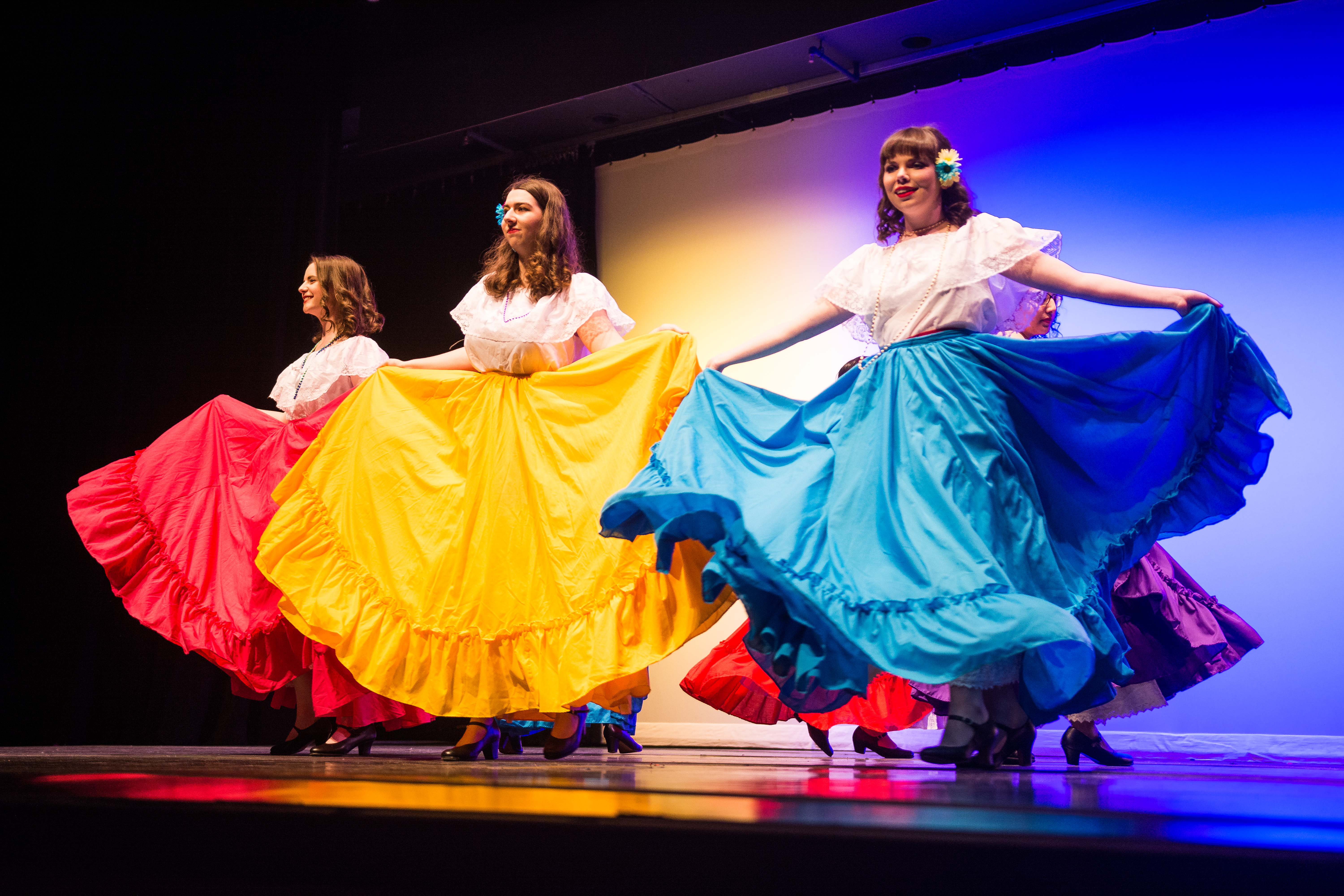
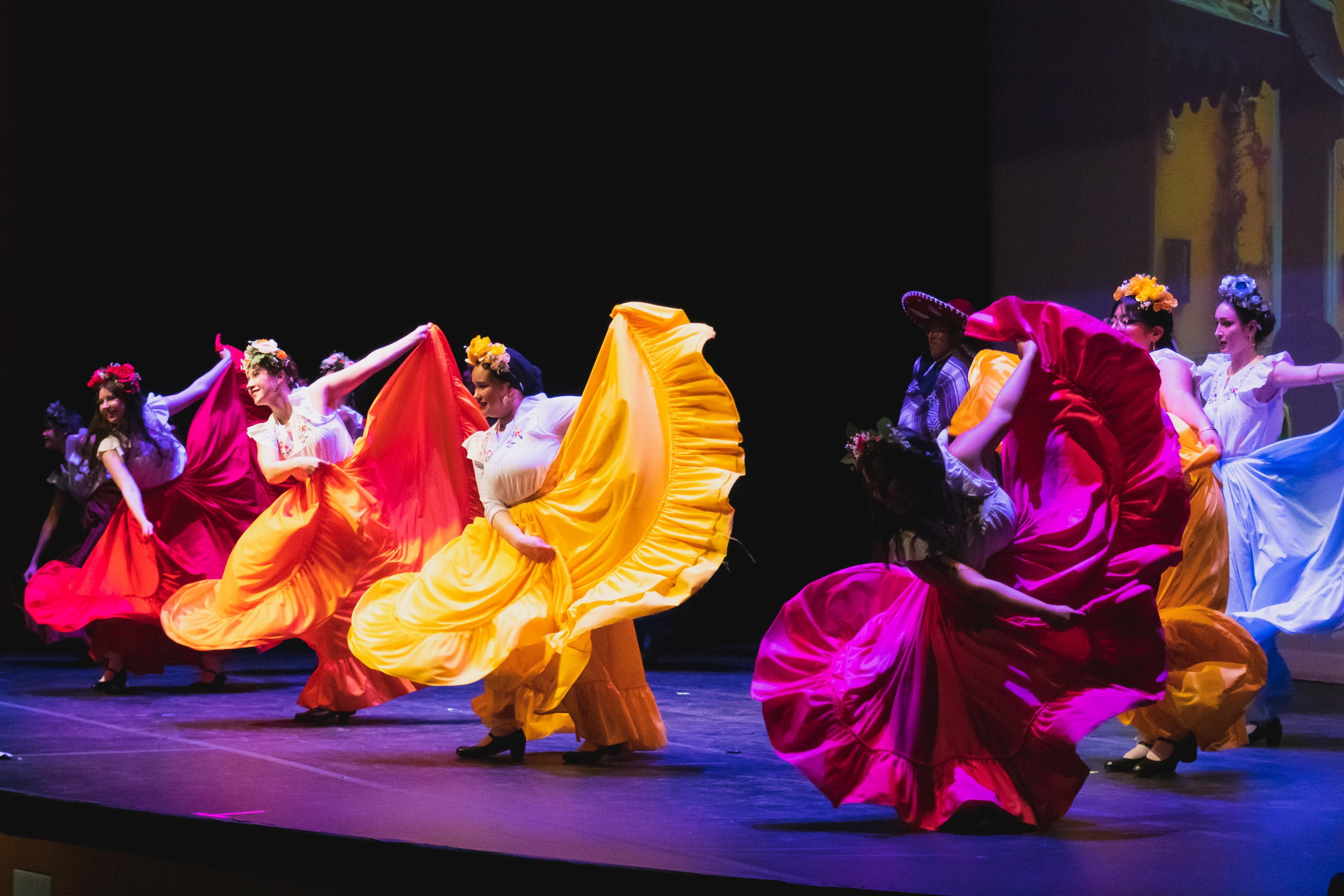

Bachata
Bachata is a dance from the Dominican Republic in the Caribbean islands. Both the music and the dance have been influenced by Cuban Bolero, the Merengue (also of Dominican Republic origin), Salsa and Cumbia. Bachata music has four beats per measure. In Bachata dancing, the dancer takes three steps to four beats of music. As with Salsa, the step timing is three steps and then a one-beat pause. The knees are flexed on the steps. Given its humble origins, the steps are flat footed.
Zouk
Zouk is both a dance and a type of music. This sensual and energetic dance has roots in Brazilian Lambada and Samba, while the music has French Caribbean roots. Zouk has a characteristic wave-like movement, elongated steps and striking hair movements by the lady. The movements are a rhythmic side to side and a rippling forward and back wave-like motion. Body rolls are reminiscent of the Samba, while hip grinds are reminiscent of the Lambada.
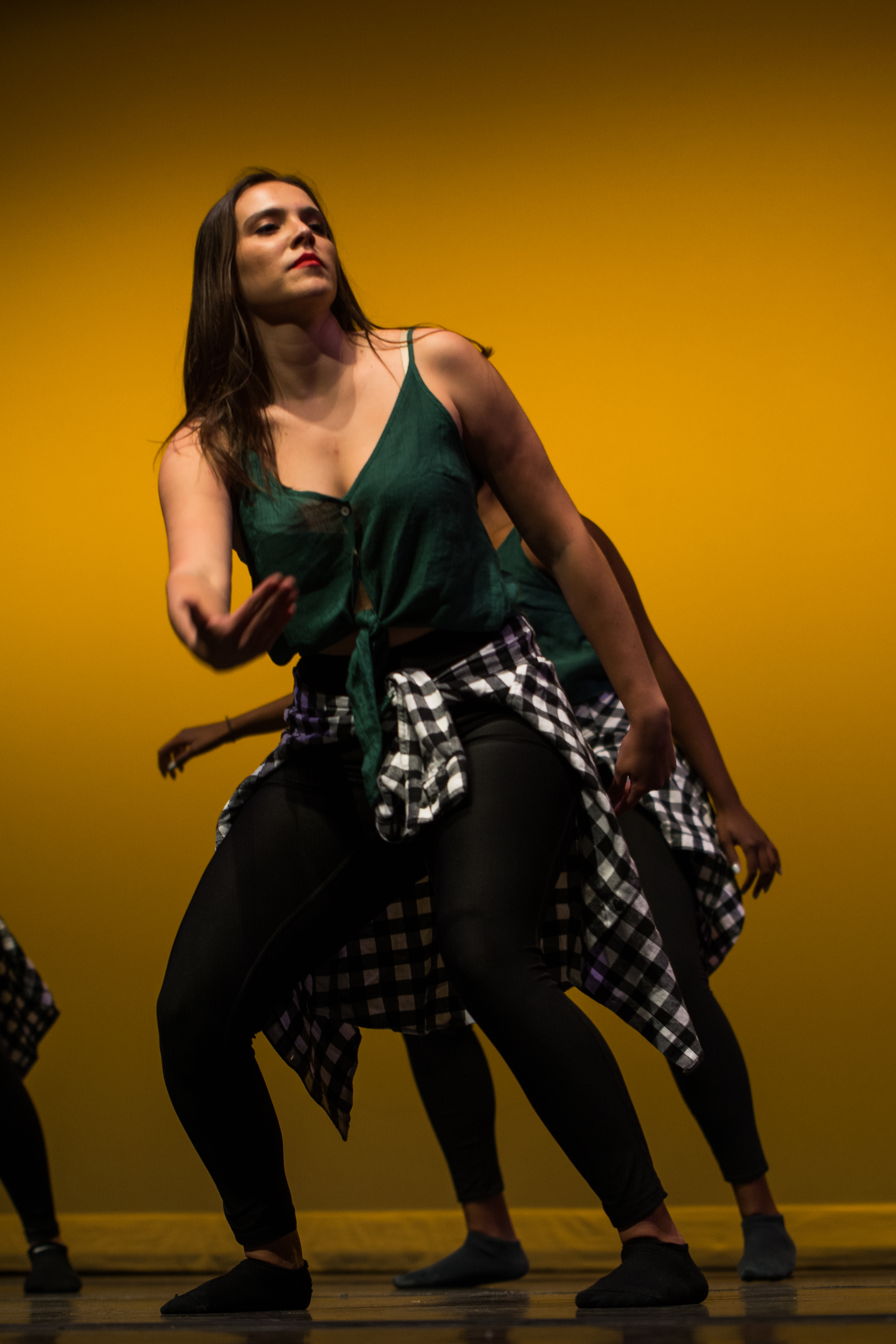


Salsa
Some salsa styles are fast, almost frenetic, with whirling partner moves, while others seem more relaxed and sensual with elements of Argentine tango or slow rhumba in them. Salsa is usually a partnered dance with a lead and follow, dancing using improvisation of various movement combinations. The beat of Salsa music is 4/4, but there are three weight changes in each measure. What happens during that extra beat is part of what differentiates the styles of the dance. While the body changes weight, the upper torso remains almost immobile. This means that most of the motion ends up in the hips, which is how the phrase “Cuban Motion” got applied to this Latin dance form.
Cha Cha
Cha Cha is a lively, fun, cheeky and playful dance. It is a non-progressive dance that emphasizes Cuban motion, distinguished by the chasses (cha-cha-cha) typically danced during the 4&1 counts of the music. Cuban motion in Cha Cha is more staccato than Rumba to reflect the music with emphasis on count 1.
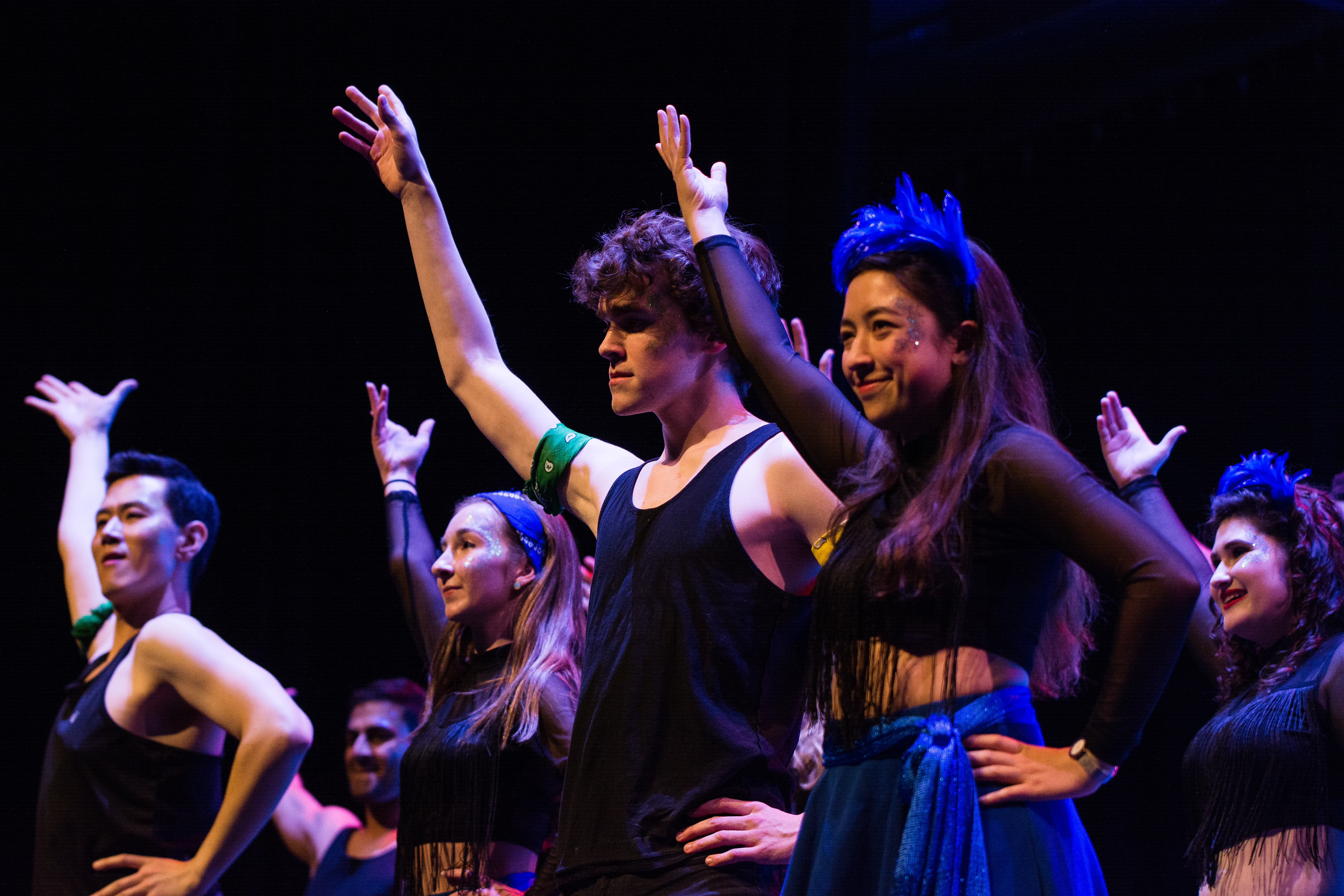

Reggaeton
Reggaeton is a genre of urban Latin music characterized by fast-paced dance beats that fuses styles of reggae and hip-hop. As it spread from its origins in Panama and Puerto Rico, it has become associated with a style of dancing common in parties that can be performed both with a partner and without.
Tango
Tango is characterized by a close hold, a low center of gravity and an emphasis on Contra Body movement. Movement is stealthy, almost cat-like and has an unmistakable staccato feel and major dramatic attitude. The Leader’s right arm is further around and lower on the Follower’s back, than in the other Smooth dances. The Leader’s left arm is bent at 90 degree angle with left hand held closed in toward the Leader’s body and face. The follower’s left hand is placed behind and below the Leader’s upper right arm.
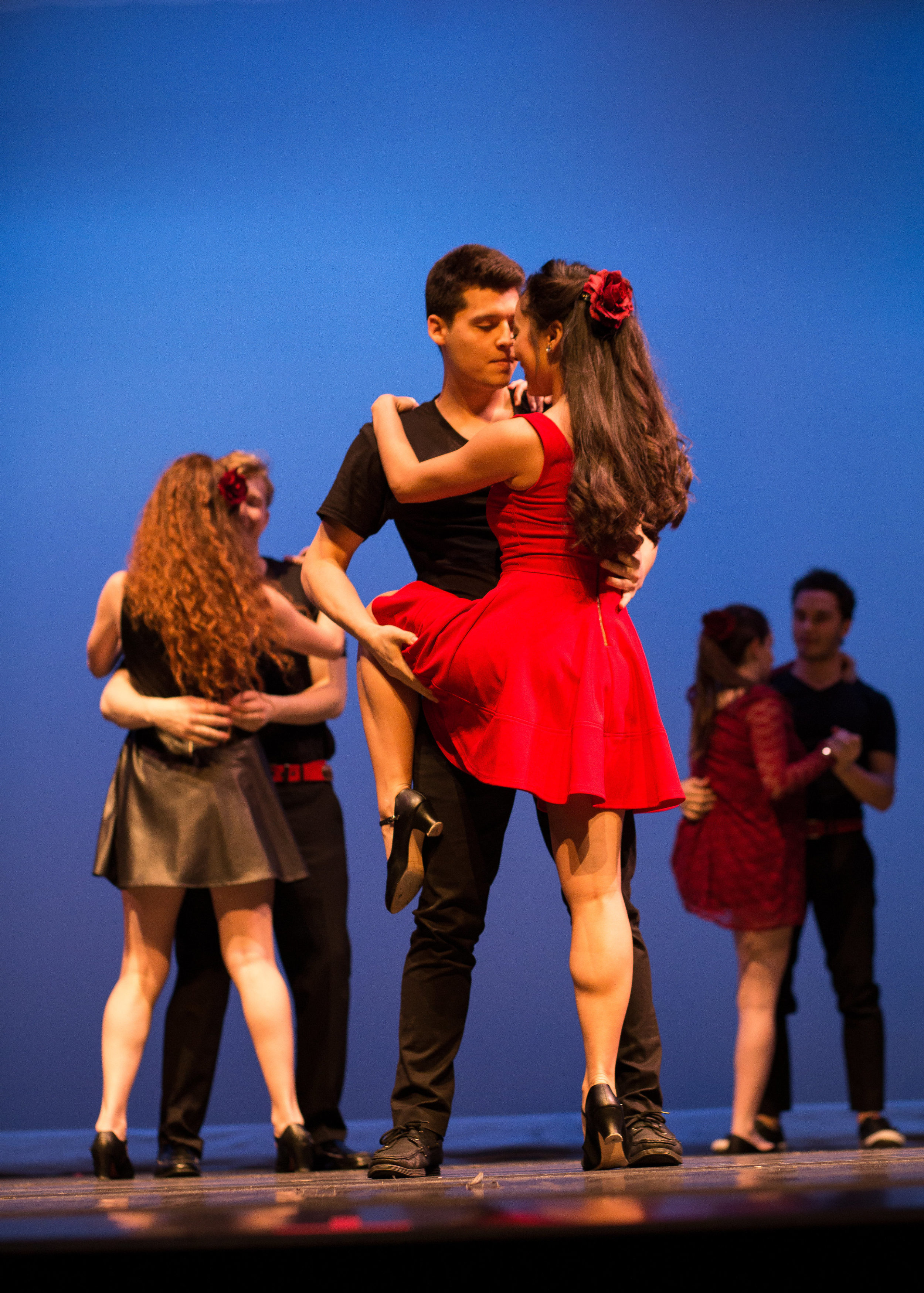

Kizomba
Kizomba is a dance and music genre originally from Angola. The term “kizomba” comes from the linguistic expression Kimbundo, which means “party”. Kizomba allows the pair to play the music they are dancing to and, according to the couple’s intimacy, becoming an extremely close dance with slow and sensual moves, requiring great leading skills and complicity between man and woman, or a more open dance with faster steps, foot work and tricks.
